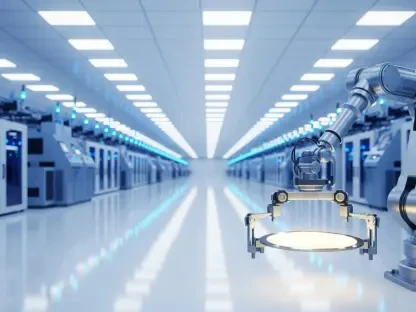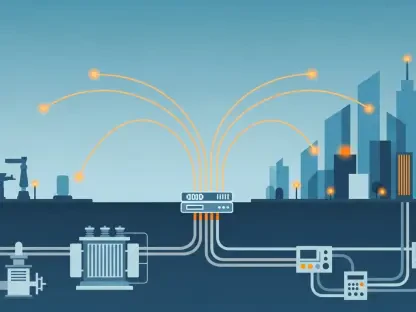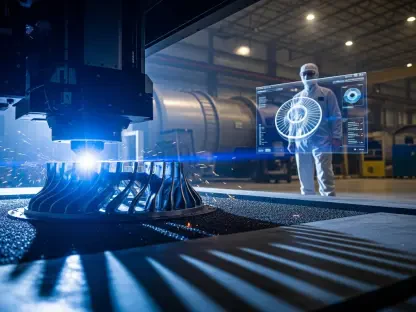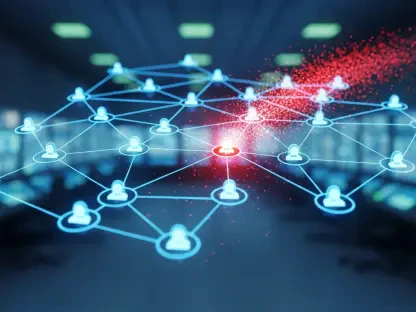The landscape of robotics and automation is undergoing a dramatic transformation, marked by the fusion of artificial intelligence and sophisticated robotic systems. This integration, often termed “physical AI,” represents a significant paradigm shift across various industries by leveraging AI to empower robots with capabilities akin to human reasoning and adaptability. The potential of this integration is vast, suggesting that the future of robotics might evolve beyond mere mechanical accomplishment to embody cognitive and interactive abilities that were unimaginable just a few years ago. As the world progresses in 2025, physical AI is increasingly seen as a cornerstone for the next evolution in automation, where machines can adapt, learn, and make creative, informed decisions, setting the stage for groundbreaking advancements in efficiency and functionality.
The Current Challenges and Limitations in Automation
In the increasingly automated industrial sector, manufacturers face persistent challenges that stifle operational efficiency. These include the rigidity of existing robotic technologies, persistent labor shortages, and costly, unpredictable downtimes. Current robotic systems, embedded with traditional programming, are optimized for performing specific tasks within controlled environments, yet they struggle to adapt to real-world variations and complexities. Such limitations have necessitated constant human oversight and intervention, which not only increases costs but also restricts the potential for scalability and innovation in various industries. This situation underscores a critical need for more intelligent systems capable of reacting to dynamic environments and unforeseen variables with human-like ingenuity and problem-solving skills.
The automation sector has long sought solutions that bridge the gap between human creativity and robotic precision. However, achieving this balance has proven elusive, primarily because conventional robotics lacks the cognitive framework required for nuanced decision-making. The stringent programming involved renders these robots highly proficient at repetitive tasks but limits their ability to respond to new scenarios unplanned in their algorithmic confines. As such, the challenge lies not just in enhancing robotic hardware but in developing an intelligent framework that enables these machines to process information contextually, thereby enhancing their adaptability and real-time responsiveness—qualities integral for elevating automation to the next level.
The Emergence and Promise of Physical AI
Physical AI holds the promise of revolutionizing the way robots interact with their environment, enabling them to undertake complex tasks traditionally reserved for humans. With physical AI, robotics is poised to achieve the unprecedented ability to navigate and manipulate the physical world with remarkable adaptability and intelligence. This advancement signifies a shift from pre-programmed monotony to a dynamic system capable of learning and adjusting its actions based on real-time data and experience. The ramifications of this evolution extend across industries, paving the way for innovations in manufacturing, healthcare, logistics, and beyond. By imbuing machines with cognitive capabilities, companies can anticipate reduced dependency on human oversight while maximizing productivity and operational flexibility.
The synergy between AI and robotics invites speculation on how physical AI will shape industry landscapes, offering transformative solutions that enhance processes and outcomes. At the heart of this evolution lies the recognition that machines need not merely assist human endeavors but can also partner in decision-making processes. Consequently, as physical AI continues to evolve, expectations mount that it will usher in a new era of automation marked by sophisticated, autonomous systems capable of performing intricate functions. This future could witness robots taking on more collaborative roles alongside humans, functioning as intelligent companions that provide insights and execute complex tasks with precision. The integration of AI not only aims to optimize existing systems but introduces possibilities for innovation that challenge the traditional boundaries of what automated machines can achieve.
Insights from Industry Leaders and Emerging Trends
The trajectory of physical AI owes much to visionary companies and industry leaders who have initiated pivotal shifts in approach and focus, steering the robotics evolution. One such entity at the forefront of this technological revolution is Palladyne AI, marking a significant shift with its transition from hardware-based robotics to the development of AI-driven software solutions. This shift reflects a broader industry trend where the emphasis is on creating robust, flexible AI systems that transcend any single hardware platform, ensuring universal applicability across various sectors. The strategic move by Palladyne AI epitomizes the adaptation process within the sector, highlighting a collective understanding that software, rather than hardware, is increasingly becoming the key driver of innovation.
The AI-driven direction of companies like Palladyne AI highlights a consensus among experts that the future of robotics lies in intelligent system design, where advanced algorithms drive robotic operations. The development of platforms like Palladyne™ IQ and Palladyne™ Pilot is indicative of efforts to endow robots with the ability to autonomously execute sophisticated functions with remarkable efficiency. These systems focus on closed-loop autonomy, allowing robots to perceive, process, and act without intensive training or energy expenditure, thereby overcoming the limitations of traditional, more rigid automation frameworks. The trend underscores an understanding that AI can significantly reduce the burden on human resources while maximizing systems’ adaptive capabilities in complex operational landscapes.
Navigating the Next Era of Robotics and Automation
As physical AI continues to gain traction, it presents a unified strategy that blends technological innovation with operational practicality, aiming for seamless implementation across numerous industries. The ability of robots to autonomously interpret data, make informed decisions, and perform intricate tasks heralds a future where human-machine collaboration reaches new heights. This potential paradigm shift invites businesses to rethink traditional operational norms, promoting an ecosystem where physical AI leads to enhanced productivity and innovative market solutions. Key industry players are already embracing this transition, prioritizing investments in AI technologies that promise to yield not just incremental improvements but radical overhauls in how business operations are conducted.
For industries grappling with labor shortages and rising operational costs, the promises of physical AI furnish an alluring proposition. Companies can now envision a shift where machines assume roles traditionally delegated to humans, not by mimicking human counterparts but by transcending human limitations through enhanced precision, speed, and decision-making capabilities. The emphasis on AI integration also highlights the potential for transformative gains in sectors such as logistics, healthcare, and manufacturing, where efficiency and innovative problem-solving are paramount. As businesses harness the power of AI, they are likely to witness unparalleled benefits in process optimization and strategic execution across complex, dynamic environments.
Looking Forward: The Transformative Future of Physical AI
In today’s automated industrial landscape, manufacturers grapple with ongoing challenges that hinder operational efficiency. One major issue is the inflexibility of current robotic technologies, which are designed to excel at specific tasks in controlled environments but fall short when adapting to the complexities and variations of real-world situations. This rigidity necessitates constant human intervention to oversee and guide operations, leading to increased costs and hampering scalability and innovation. Also, the sector is burdened by persistent labor shortages and expensive, unpredictable downtimes.
Current robotic systems rely heavily on traditional programming, which optimizes them for repetitive tasks but doesn’t provide the cognitive framework needed for nuanced decision-making. This limitation underscores the need for more intelligent systems that can process information contextually, adapting to dynamic environments and unforeseen variables with problem-solving skills akin to human ingenuity. The quest for automation solutions that merge human creativity with robotic precision has long been sought, but achieving this balance has proven difficult. The challenge isn’t just about enhancing robotic hardware but creating an intelligent framework that allows machines to be responsive and adaptable in real-time situations. This enhancement is crucial for advancing automation to its next stage, where robots can operate with a level of autonomy that reflects human cognitive abilities.









